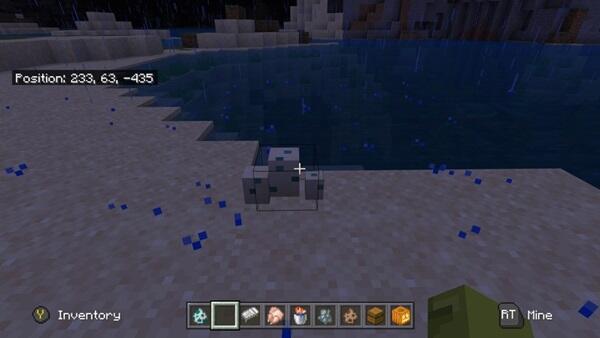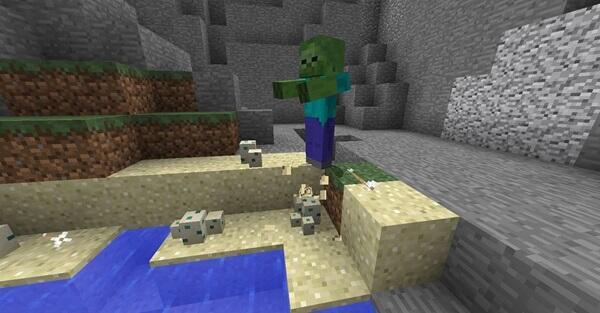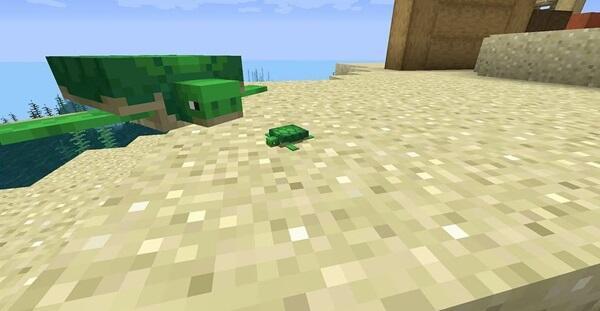Contents
Introduction to Turtle Breeding in Minecraft
Embarking on a journey through the pixelated realms of Minecraft, players often encounter a multitude of unique creatures, each adding a layer of depth to this vibrant world. Among these, the serene turtles stand out, not just for their peaceful demeanor but also for the intriguing possibility they offer: turtle breeding. This aspect of gameplay, a delightful blend of challenge and reward, invites players to delve deeper into the ecosystem of Minecraft, uncovering new layers of engagement and strategy.

Turtle breeding in Minecraft goes beyond mere fascination; it holds significant importance in the game’s mechanics. By mastering this skill, players unlock the potential to craft essential items like the Turtle Shell Helmet, offering both protective and functional benefits. Furthermore, engaging in this activity enhances the player’s understanding and appreciation of the game’s environmental aspects, fostering a deeper connection with the virtual world they inhabit. Thus, breeding turtles is not just a whimsical venture, but a meaningful endeavor that enriches the overall Minecraft experience.
Why Breed Turtles?
- Crafting Advantages: The primary allure of breeding turtles lies in the unique items they yield. When turtles grow from hatchlings to adults, they drop ‘scutes,’ essential ingredients for crafting the coveted Turtle Shell Helmet. This helmet, apart from its protective properties, endows players with the ‘Water Breathing’ status effect, greatly enhancing underwater exploration.
- Environmental Interaction: Breeding turtles enriches the player’s interaction with the Minecraft environment. It encourages exploration of beaches and oceans, biomes where turtles naturally spawn, thus expanding the player’s engagement with different aspects of the game world.
- Educational Aspect: The turtle breeding process in Minecraft mirrors real-world turtle conservation efforts. Players learn about the importance of protecting eggs from predators and ensuring safe hatchling passages to the sea. This aspect adds an educational layer to the game, raising awareness about wildlife conservation.
- Game Progression: Successfully breeding turtles is not just a fun activity; it’s also a marker of progression in the game. It demonstrates a player’s advancement in understanding complex game mechanics, adding to the sense of achievement and mastery over the game.
- Aesthetic Pleasure: Watching turtle hatchlings grow adds a touch of serenity and beauty to a player’s Minecraft base or chosen habitat. It creates a more dynamic and lively environment, enhancing the overall aesthetic appeal of the game.

Prerequisites for Breeding
- Locating Turtles: The first step in turtle breeding is finding these creatures. Turtles typically spawn on the beaches of various biomes, so players should explore these areas. Look for sandy shorelines, as turtles prefer to roam and lay eggs there.
- Creating a Suitable Habitat: Once turtles are located, it’s essential to prepare a conducive environment for breeding. This habitat should ideally mimic a beach, with ample sand for laying eggs and easy access to the ocean for the hatchlings.
- Seagrass Collection: Seagrass is the key item needed for breeding turtles. Players must collect seagrass from underwater, which requires shears. This vegetation is the only food that entices turtles to enter love mode for breeding.
- Ensuring Safety: Protect the turtle eggs from potential threats, such as hostile mobs. Building a fence or providing adequate lighting around the nesting area can safeguard the eggs until they hatch.
- Patience and Time: Breeding turtles in Minecraft is a time-consuming process. From laying eggs to the hatching of turtles, players need to exhibit patience. The eggs go through several stages before hatching, and this process cannot be expedited.

Step-by-Step Guide to Breed Turtles
- Finding Turtles: Begin your turtle breeding adventure by locating these peaceful creatures. Turtles are most commonly found on the beaches of various biomes. Keep an eye on sandy shorelines, where they often roam and lay eggs.
- Collecting Seagrass: Essential for enticing turtles, seagrass can be harvested underwater using shears. Gather a sufficient amount, as you’ll need it to induce the breeding process.
- Breeding Turtles: Approach two turtles with seagrass in hand. Feed each turtle seagrass, which will put them into ‘love mode.’ They will then pair up to breed, resulting in one of them laying eggs.
- Protecting Turtle Eggs: After breeding, a turtle will lay eggs on a nearby sand block. These eggs are vulnerable and can be destroyed by hostile mobs or careless steps. Protect them by fencing off the area or ensuring sufficient lighting to prevent mob spawning.
- Hatching Process: Turtle eggs go through several stages before hatching, which takes time. Be patient, as this process cannot be rushed. The eggs will eventually crack and hatch into baby turtles.
- Growth of Hatchlings: Once hatched, the baby turtles will grow into adults over time. They drop ‘scutes’ upon reaching adulthood, which are key ingredients for crafting Turtle Shell Helmets.
- Repeat the Cycle: With adult turtles at hand, you can repeat the breeding process. This ensures a sustainable cycle of turtle breeding in your Minecraft world, providing a continuous supply of scutes for your crafting needs.
Locating Turtles
In the expansive world of Minecraft, locating turtles requires a keen eye and some strategic exploration. Turtles naturally spawn in the game’s ‘Beach’ biomes, making any sandy shoreline a potential hotspot for these serene creatures. These biomes are typically found alongside oceans and seas, characterized by their sandy beaches and gentle waves. Players should focus their search in these areas, scanning the coastline for any sign of turtle activity.

Another tip for finding turtles is to explore during the daytime. Turtles, being passive mobs, are more active and visible under the sun’s rays. They often bask on the sand or swim near the shore, making them easier to spot in daylight. Additionally, patience plays a key role in this endeavor. Since turtle spawns are not guaranteed, players may need to visit multiple beaches or wait for them to appear in a known turtle-friendly biome. With persistence and a bit of luck, encountering these charming creatures becomes a rewarding part of the Minecraft adventure.
Breeding Process
- Gather Seagrass: The first step in the turtle breeding process is obtaining seagrass, the only food that turtles will accept for breeding. Equip shears and dive underwater to collect this vegetation, typically found in ocean biomes.
- Find Two Turtles: Breeding requires two adult turtles. Once you’ve located them, ensure they are close to each other and on sand for the breeding to be successful.
- Feed Seagrass to Turtles: With seagrass in hand, approach each turtle and use the item on them. This will trigger ‘love mode,’ indicated by heart particles appearing over the turtles.
- Wait for Egg Laying: After the turtles have entered love mode and mated, one of them will return to its home beach – the beach where it first spawned. This turtle will dig in the sand and eventually lay eggs.
- Protect the Eggs: Turtle eggs are delicate and can be trampled or attacked by mobs. Protect them by enclosing the area or lighting it up to prevent mob spawning. Patience is key, as the eggs take time to hatch.
- Hatchling Care: Once the eggs hatch, baby turtles will emerge. They will take some time to grow into adults, and once they do, they’ll drop scutes, which are used to craft the Turtle Shell Helmet.

Tips and Tricks for Efficient Turtle Breeding
- Creating a Turtle Sanctuary: Design a dedicated breeding area for turtles on a beach biome. This controlled environment makes it easier to manage and protect both the turtles and their eggs. Include a fenced perimeter to keep out hostile mobs and ensure the safety of the eggs.
- Efficient Seagrass Farming: Establish a nearby underwater seagrass farm. By planting and harvesting seagrass close to your turtle breeding area, you can streamline the feeding process. This ensures a steady supply of seagrass for breeding without the need for long expeditions.
- Multiple Breeding Pairs: To maximize efficiency, breed multiple pairs of turtles at the same time. This increases the number of eggs laid, leading to a higher yield of baby turtles and, ultimately, more scutes.
- Use of Silk Touch Tools: When relocating turtle eggs, use a tool enchanted with Silk Touch. This allows you to safely pick up and move the eggs without breaking them, giving you more control over the hatching environment.
- Nighttime Vigilance: Since turtle eggs hatch faster at night, staying vigilant during this time can be beneficial. Protect the eggs from zombies and other nocturnal mobs that might attempt to destroy them.
- Lighting for Protection: Adequate lighting around the breeding area prevents hostile mobs from spawning. Use torches or other light sources to create a safe environment for both the eggs and the turtles.
- Patience and Observation: Regularly check on the breeding area. Keeping an eye on the progress of egg hatching and the growth of baby turtles helps in timely management and protection efforts.
Minecraft on Android: Enhancing Your Experience
Playing Minecraft on Android devices offers a distinct experience compared to traditional PC or console gaming. One of the most notable differences is the portability factor. With Minecraft on Android, the vast, blocky worlds are at your fingertips anywhere, anytime. This mobility allows for spontaneous gaming sessions, whether you’re on a commute, taking a break, or cozying up in your favorite spot at home. The game adapts to your lifestyle, not the other way around, making it more accessible than ever.

Another unique aspect is the touch-screen interface. Android users navigate and interact with the Minecraft world through intuitive touch controls, a departure from the keyboard and mouse or controller inputs of other platforms. This change offers a more tactile and direct interaction with the game world, though it may require some adaptation for players used to other control schemes. Moreover, the game’s visuals and performance are optimized for mobile devices, ensuring a smooth and visually pleasing experience even on smaller screens. This optimization makes Minecraft not only playable but enjoyable on a wide range of Android devices, broadening its appeal and accessibility.
Conclusion: The Joys of Turtle Breeding
In conclusion, the art of turtle breeding in Minecraft offers a unique and enriching experience that extends beyond mere gameplay. It’s an activity that combines the joys of discovery, the thrill of nurturing, and the satisfaction of contributing to the ecological balance of your virtual world. The process of locating turtles, creating a safe breeding environment, and witnessing the hatching and growth of baby turtles brings a sense of accomplishment and connection to the game’s vibrant ecosystem.
Furthermore, the practical benefits, such as crafting the valuable Turtle Shell Helmet, add a layer of reward to this engaging endeavor. Turtle breeding in Minecraft is more than just a task; it’s an adventure that enhances your understanding and appreciation of the game’s intricate world. Whether you’re a seasoned player or new to Minecraft, breeding turtles is an experience that promises enjoyment and a deeper connection to the game. So, dive into the sandy beaches of Minecraft, and start your turtle breeding journey today!